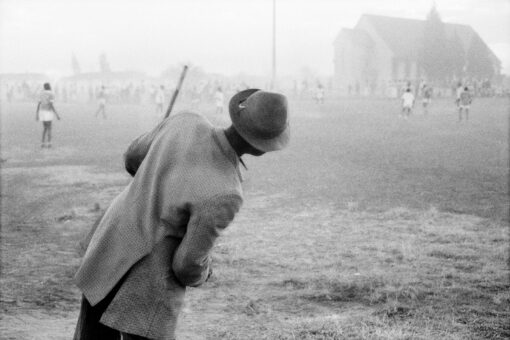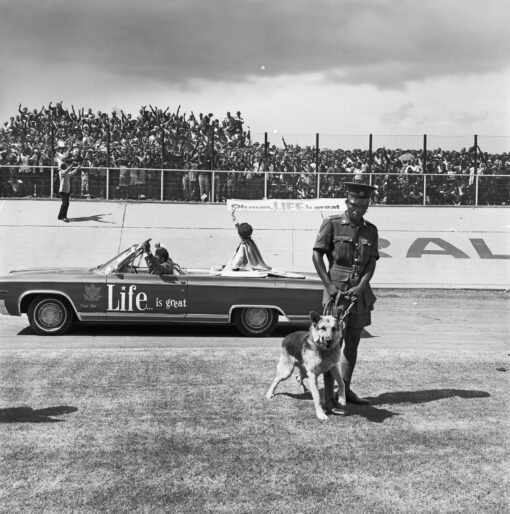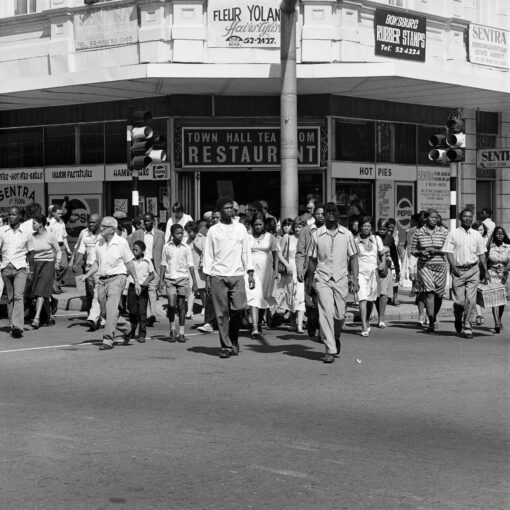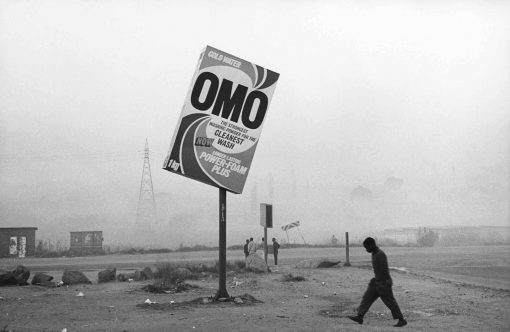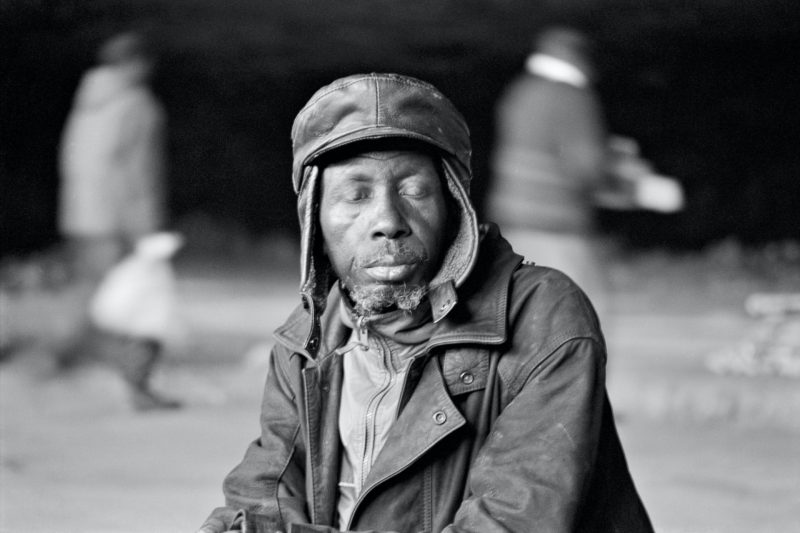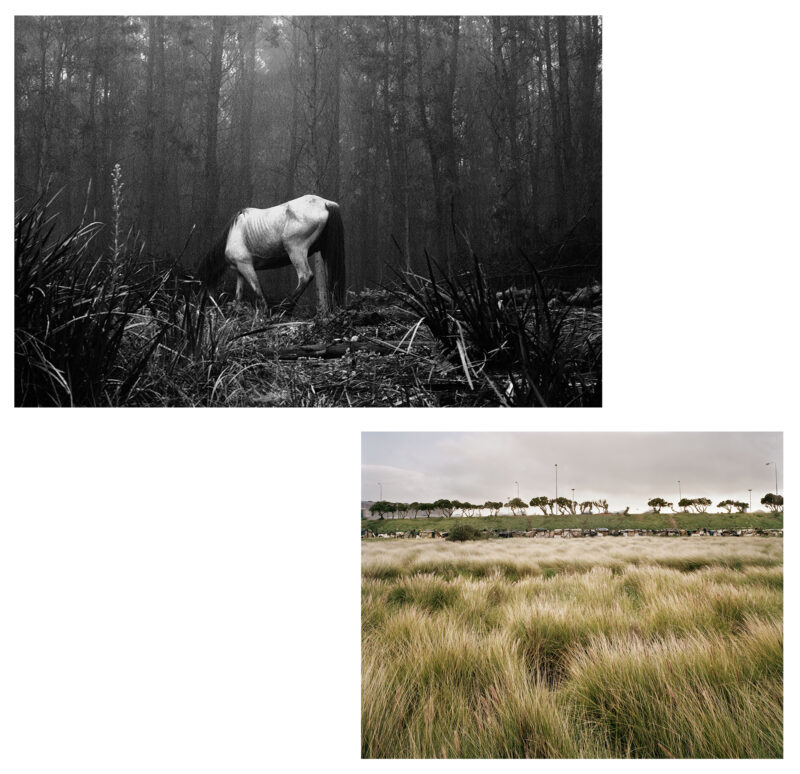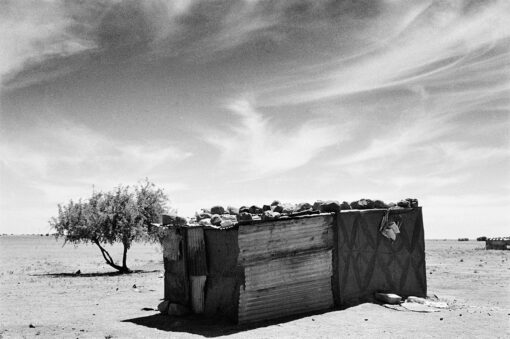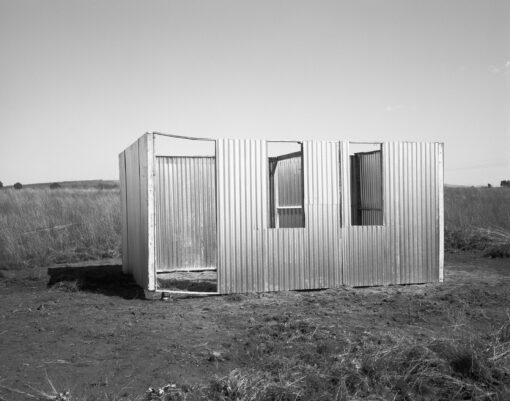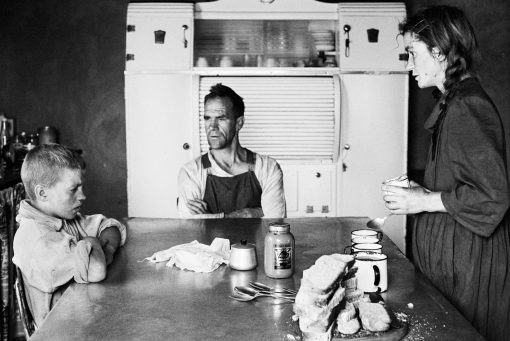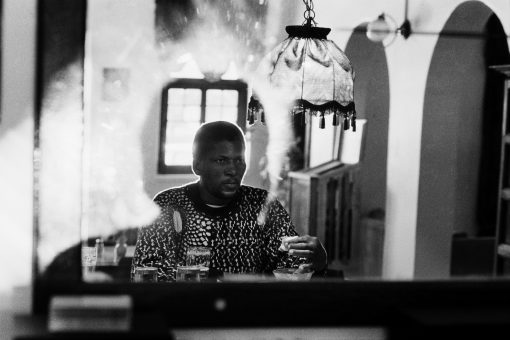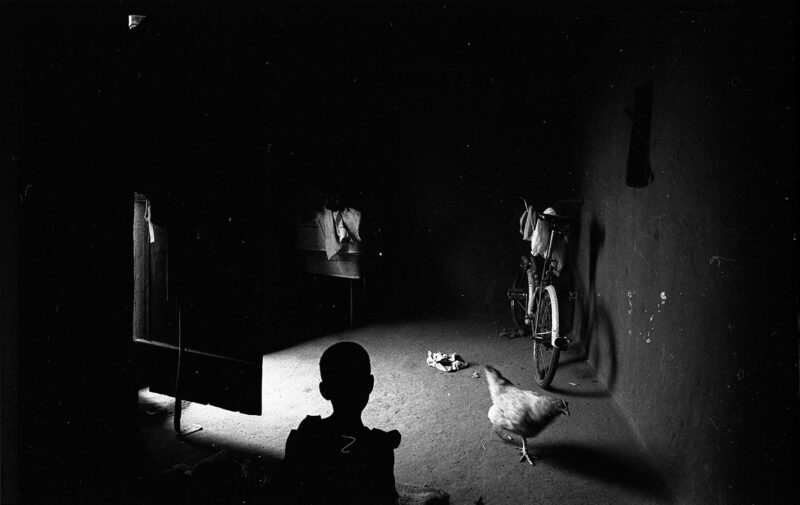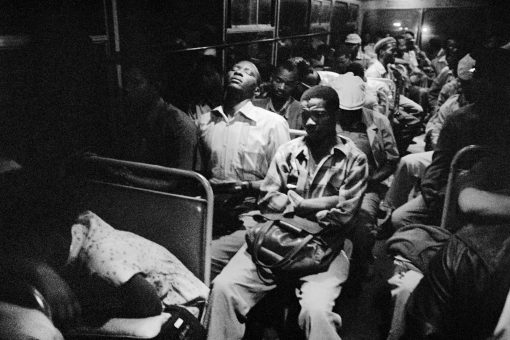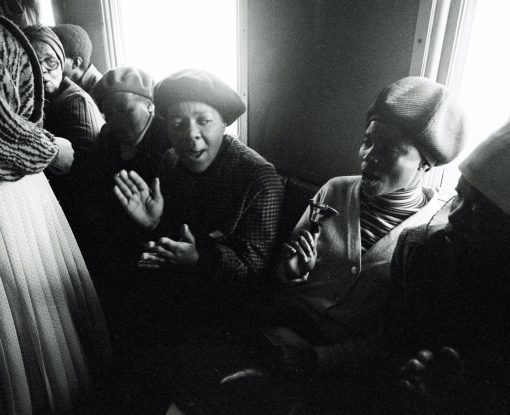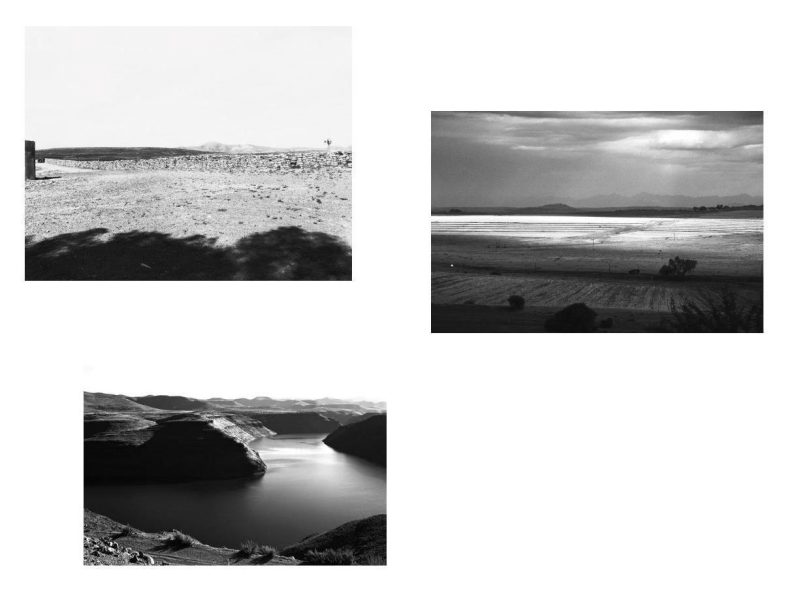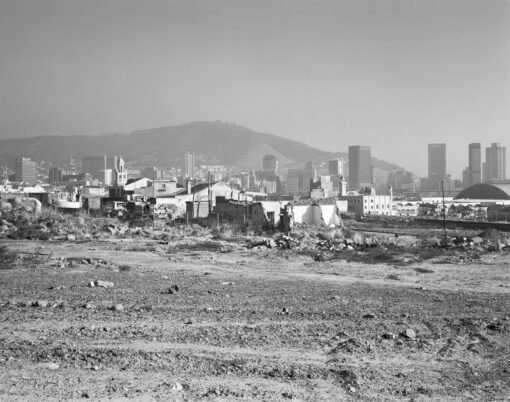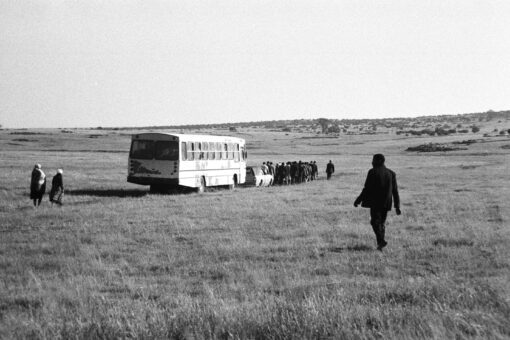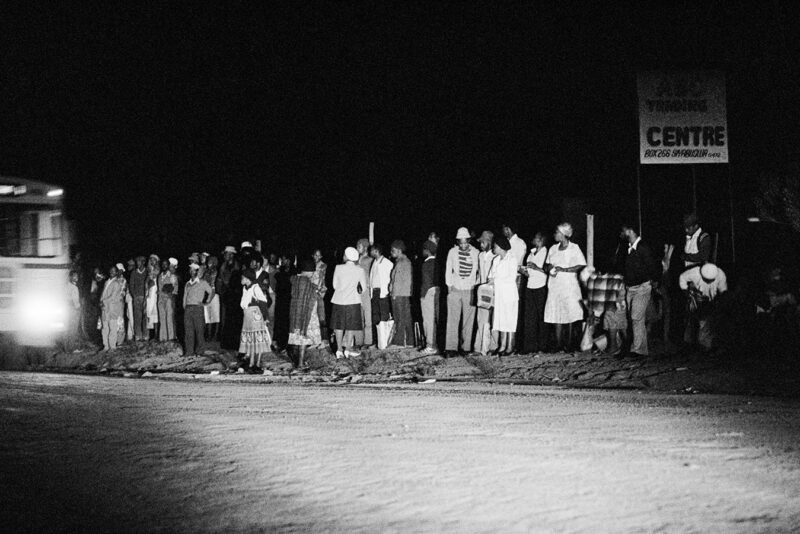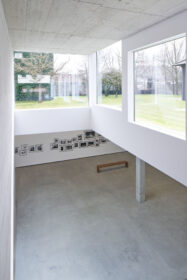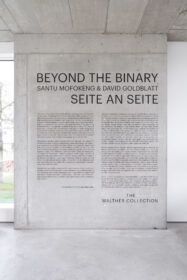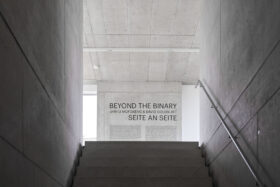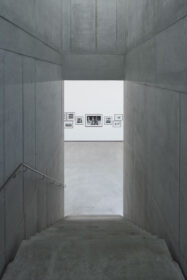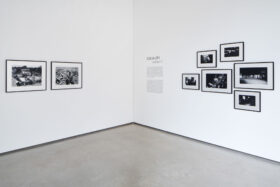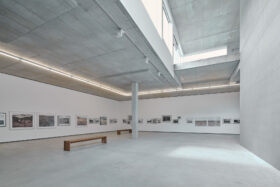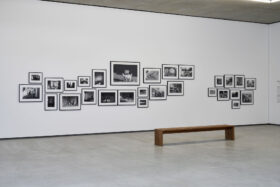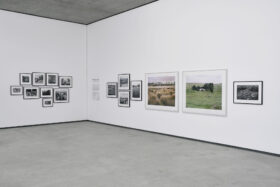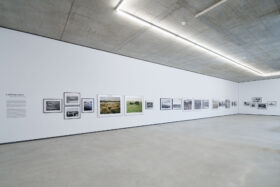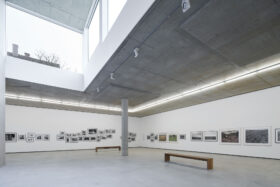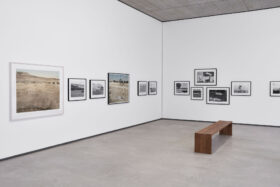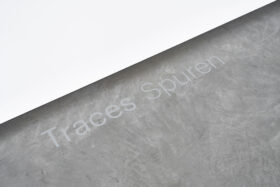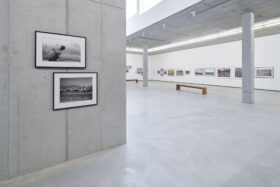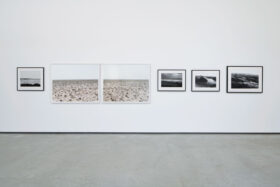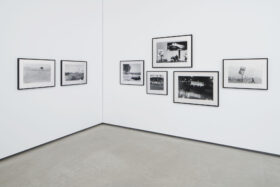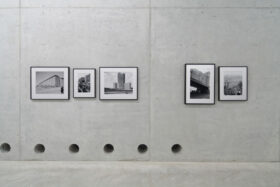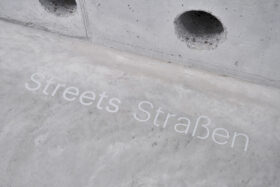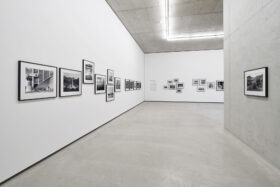Beyond the Binary
4/16/2023 — 11/12/2023
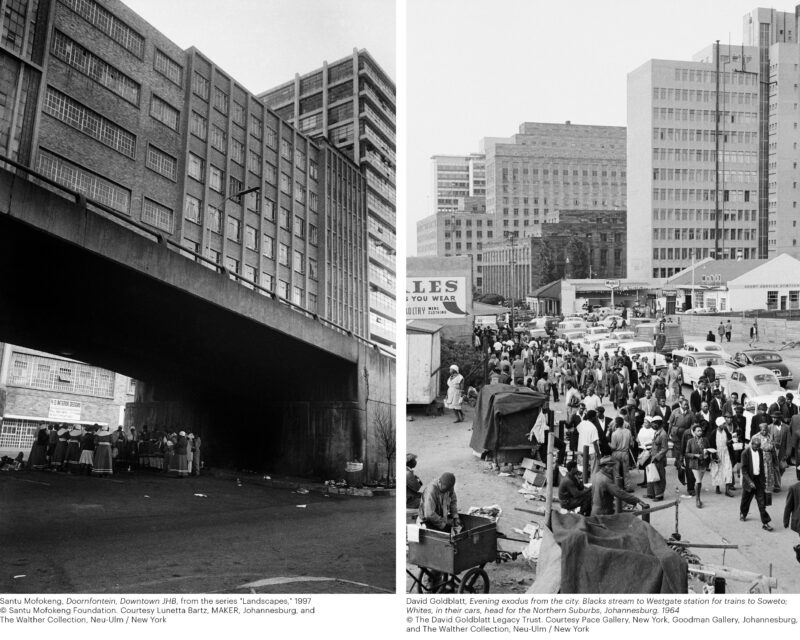
4/16/2023 — 11/12/2023
The Walther Collection continues its focus on contemporary photography from Africa with the first dialogic exhibition of works by Santu Mofokeng (1956-2020) and David Goldblatt (1930-2018) at its museum campus in Neu-Ulm. Drawn from its extensive holdings and curated entirely out of the Collection, the exhibition curated by art historian Tamar Garb opens dynamic spaces for re-evaluation and re-interpretation by interweaving the works of these extraordinary photographers.
Structured around three overarching themes and sub-chapters, this unique curatorial approach offers new ways of looking at the oeuvres of Mofokeng and Goldblatt, allowing for surprising juxtapositions and new insights to emerge. Both men set out to picture everyday life and experience in South Africa during Apartheid and its aftermath. But where they are often positioned in contrast to one another, with Goldblatt understood as the insightful social documentarian and Mofokeng as the visionary poet, this exhibition aims to question such a separation and to allow the images to traverse preconceived labels and patterns of perception. By combining their works in novel ways the exhibition seeks to draw out the distinctiveness of each while questioning the binaries through which they are customarily viewed.
The exhibition is organized in three thematic sections that unite Mofokeng’s and Goldblatt’s works: Earthscapes, Edifices and Sociality.
Earthscapes is devoted to Mofokeng and Goldblatt’s photographic investigations of landscape and explores how its topography is affected by culture and human habitation. The appearance of the landscape is always shaped by the events that have taken place within it. Both Goldblatt and Mofokeng were fascinated by the traces and residues of the past, imprinted on the surface of the land and etched in the very shapes it assumes. Subject to political, environmental, and historical forces, the landscape simultaneously reveals and conceals its history. Both Goldblatt and Mofokeng explored what a photograph can do to evoke the layered accretions of time and the socially inflected space of the land.
Edifices turns to South African dwellings, their physical structures as well as their social fabric and situation — in the street, on the slopes, in the margins. Goldblatt and Mofokeng’s works explore what defines ‘home’ and the forces by which this space – physical and psychic – can be easily and ruthlessly destroyed. The fragility and precarity of shelter, alongside those who build and inhabit its frames are explored. So too are the impenetrable edifices of ‘whiteness’ and the permeable structures that house the racialized poor, always vulnerable to the vagaries of political bureaucracy and power. The streets, saturated with signage, function as places of social interaction and offer a particular image of this land. Both photographers explore how the segregated past plays out in the movement and flows of people, subject to the infrastructures of city and State. But they also look askance, beyond the official narratives to what escapes and exceeds expectation.
Sociality explores the way that social experience is played out in photography. It brings together images of people, most often in groups, and explores the contacts and contexts they share — in intimate interiors, on the daily commute, in worship and still contemplation. Ranging from the forensic particularity of a posed shot to the incidental capturing of movement and flow, these photographs capture the strangeness embedded in daily life, often glimpsed in half light and dark shadow, but always subject to the external structures and exigencies of the law. For Goldblatt and Mofokeng surface appearance is a conduit to interiority, the rhythms of light and dark, shadow and shaft, mobilized to reveal a sentience and subjectivity that is experienced at the level of the individual but is always historically informed.
Santu Mofokeng (1956–2020) was born in Johannesburg. He began his photographic career as a street photographer in Soweto during the early 1980s, and briefly worked as a photojournalist for the alternative local newspaper New Nation. In 1985, he joined the famed photographic collective Afrapix (1985–1992), as a former student of David Goldblatt.
While working as a documentary photographer and researcher at the Institute for Advanced Social Research at the University of the Witwatersrand (1988–98), Mofokeng developed his critically acclaimed and widely exhibited project The Black Photo Album/Look at Me: 1890–1950—an extensive collection of locally commissioned family photographs presented as an alternative to the state-based South African photographic apparatus. His practice operates contrary to the idea that photography only reproduces what is visible, and instead focuses on the poetic, transcendent, and ethereal. In his photographic essay Trauma Landscapes, Mofokeng deepens his artistic exploration of sites imbued with historical significance and traumatic memories, asserting that landscape appreciation is not only informed by personal experience, myth, and memory but also “by ideology, indoctrination, projection, and prejudice.”
Mofokeng was awarded the Ernest Cole Scholarship in 1991 and studied at the International Centre for Photography in New York. He was the first Mother Jones Award winner for Africa, in 1992; in 1998 he was the recipient of the Künstlerhäuser Worpswede Fellowship, and in 2001, the DAAD Fellowship, both in Germany. He participated in documenta 11 in Kassel, Germany, in 2002, and in 2009 was nominated as a Prince Claus Fund Laureate for Visual Arts. In 2016 he was awarded an Honorary Doctorate from the University of the Witwatersrand in 2016. His first international retrospective, Chasing Shadows—Thirty Years of Photographic Essays, opened in 2011 at the Jeu de Paume in Paris, France, and subsequently travelled to Kunsthalle Bern, Germany; Bergen Kunsthall, Norway, and the Wits Art Museum in Johannesburg, South Africa. Mofokeng represented Germany at the 55th Venice Biennale as part of the French Pavilion in 2013. He was the inaugural recipient of the first International Photography Prize, established by the Fondazione Fotografia Modena and Sky Arte HD, in 2016. In 2019, Steidl released an 18-book box set, made in collaboration with the artist.
The son of Lithuanian-Jewish immigrants, David Goldblatt (1930–2018) was born in Randfontein, a small mining town outside of Johannesburg, South Africa. Shortly after graduating from high school, he began to chronicle the people, architectures and landscapes of his country, from 1948 onwards—through the rise of Afrikaner Nationalism, the apartheid regime, and into the democratic era. In particular, Goldblatt documented the inhabitants, landscapes and industry of the Witwatersrand, the resource-rich South African area in which he grew up and lived, where the local economy was based primarily on mining. Goldblatt’s subject matter spanned the whole of the country geographically and politically—from the sweeping landscapes of the Karoo desert to the arduous commutes of migrant Black workers, forced to live in racially segregated areas during apartheid. His broadest series, which spans six decades of photography, examines how South African values are expressed through “structures of public life,” both physical and ideological.
In 1989, Goldblatt founded the Market Photography Workshop, a renowned training institute for aspiring photographers, in Johannesburg. He was the first South African to have a solo exhibition at the Museum of Modern Art in New York, in 1998, and in 2001, a retrospective of his work toured internationally. He was one of the few South African artists to exhibit at documenta 11 (2002) and documenta 12 (2007) in Kassel, Germany. Notable solo exhibitions include those at the Jewish Museum, and the New Museum, both in New York, and his work has featured in group shows at the San Francisco Museum of Modern Art, and Barbican Centre in London, as well as in ILLUMInations at the 54th Venice Biennale in 2011. He published over twenty award-winning books, and in the last year of his life, two major retrospectives of his work opened at Centre Pompidou in Paris, and the Museum of Contemporary Art in Sydney. Goldblatt was the recipient of the 2006 Hasselblad award, the 2009 Henri Cartier-Bresson Award, the 2013 ICP Infinity Award and, in 2016, he was awarded the Commandeur l’Ordre des Arts et des Lettres by the Ministry of Culture of France. The Goldblatt Archive, consisting of more than 100,000 negatives, is held by Yale University, in New Haven, Connecticut, in the United States.
Santu Mofokeng’s and David Goldblatt’s works are a central part of The Walther Collection, which represents one of the world’s largest private collections of African photography. Both of their works have been featured in numerous exhibitions of the Collection in Neu-Ulm and New York City as well as in traveling exhibitions that have toured internationally.
Tamar Garb is Durning Lawrence Professor of the History of Art at University College London, a Fellow of the British Academy, and an art historian, critic and curator. She is a graduate of the Michaelis School of Fine Art, University of Cape Town, the Institute of Education, University of London, and she holds a PhD in Art History from the Courtauld Institute of Art, awarded in 1991. She has published widely on questions of gender and sexuality, race and representation, both in relation to European modernisms and the art and visual culture of southern Africa. Key publications include Sisters of the Brush (1994); The Jew in the Text (1996); Bodies of Modernity (1998); The Painted Face (2007), and The Body in Time (2008). Her curatorial projects include Homelands/Land Marks: Contemporary South African Art, Haunch of Venison Gallery, London (2008), Figures & Fictions: Contemporary South African Photography, V&A, London (2011), Distance and Desire: Encounters with the African Archive, The Walther Collection, New York and Neu-Ulm (2014), Conversations in Letters and Lines: William Kentridge and Vivienne Koorland, Fruitmarket Gallery, Edinburgh (2016), and Made Routes: Berni Searle and Vivienne Koorland, Richard Saltoun Gallery, London (2018). In addition, she has written and lectured on modern/contemporary artists, including Alice Neel, Lee Lozano, Constance Stuart-Larrabee, Marlene Dumas, Christian Boltanski, Mona Hatoum, Lebohang Kganye, Sethembile Msezane, Zanele Muholi, and Berni Searle. Her current commitments focus on archives, aesthetics, historical violence and art making/writing in contemporary Africa and the African diaspora.
© Matthias Schmiedel
Ein wunderbarer Videobeitrag über die beiden aktuellen Ausstellungen der Walther Collection: "Trace - Formations of Likeness" im Haus der Kunst München und "Beyond the binary"/"Seite an Seite - Santu Mofokeng und David Goldblatt" in den eigenen Museumswänden in Burlafingen.
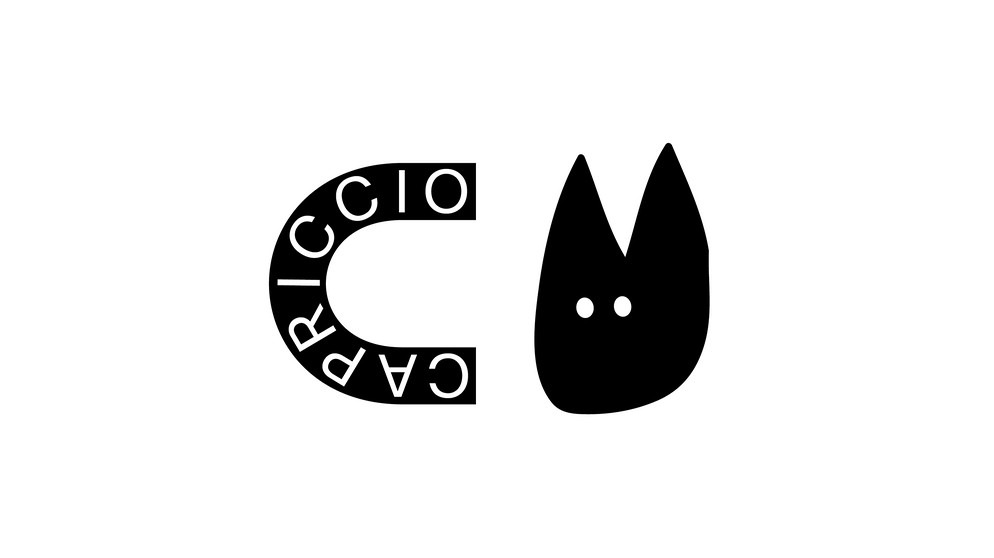
Bei aller Unterschiedlichkeit enthüllt die dialogische Schau, indem sie die beiden Künstler ohne Ansehen der Person nur thematisch gruppiert, wie ähnlich und wie nah sie sich sind.

Die Londoner Kunsthistorikerin und Kuratorin Tamar Garb lässt in ihrer Ausstellung die Zuordnung von Werk und Autor verschwimmen.

Umfassend wie nie im Münchner Haus der Kunst, konzentriert auf dem Campus in Burlafingen: Die neuen Ausstellungen „Traces“ und „Seite an Seite“ zeigen die Breite, Tiefe und Qualität der Walther Collection.

